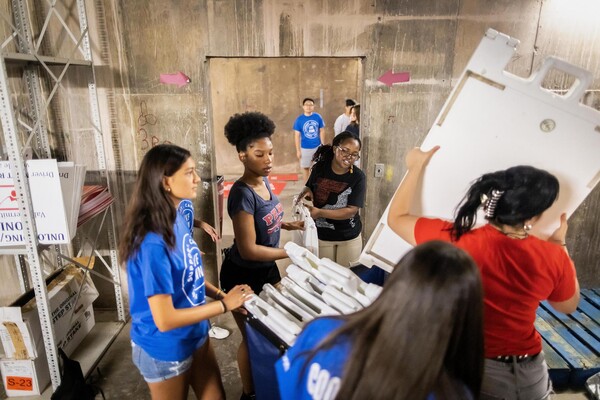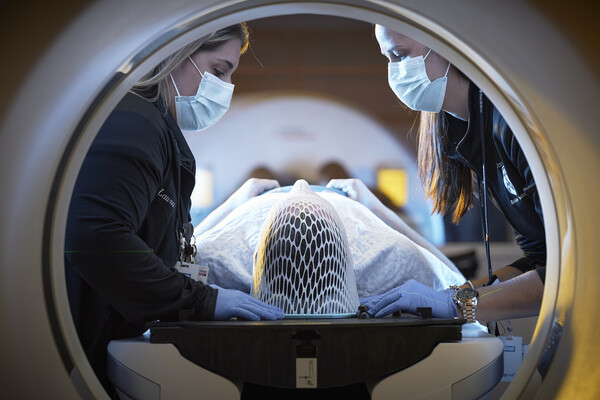Growing up, Doug Wiebe’s parents were always pointing out birds.
“In my family, we would use accurate names for the species,” says Wiebe, an epidemiologist with the Perelman School of Medicine. “I’m far from a bird expert, but I did get familiar with birds.”
So, when he spotted a small white one hopping around the Button sculpture outside Van Pelt Library, he was curious. He and a colleague—also a birder—tried to get a closer look, but they couldn’t see much more. “I thought it was so interesting that I went back with my good camera two days later,” he says. “Right there on the benches in front of the library were not one but two.” He took some photos and posted them to the iNaturalist app.
Wiebe had previously used the crowdsourcing forum to participate in the Penn Bird Strikes program, where users can document when they encounter a bird that’s collided with a campus building. He’d also been regularly posting other nature sightings there. “People can confirm your observations and then they become useable for research,” he says. “I love the whole citizen science aspect to it.”
The iNaturalist community shared Wiebe’s enthusiasm for the birds. They turned out to be house sparrows, their whiteness likely the result of a rare genetic condition called albinism, which stems from a mutation that prevents proper melanin production. The other possibility was another genetic condition called leucism in which pigment doesn’t reach all parts of a bird’s feathers, but that typically results in white splotches, giving the animal a mottled look.
“Totally white birds like these are unusual,” says bird expert and conservationist Kenn Kaufman, longtime field editor for Audubon magazine. “These individuals also appear to have pinkish eyes, which is true of many, but not all, albinos.”
While the look is striking, the unique coloration may actually disadvantage these individuals, says Alison Fetterman, a bird conservation associate at Willistown Conservation Trust, who co-teaches an ornithology course at Penn. Mate selection, for example, often relies on plumage, so “this coloration may not be as attractive to the opposite sex,” she says.
White feathers may not camouflage as well either, she adds, making these individuals more vulnerable to danger than their peers. That said, albino house sparrows—particularly those like the two Wiebe saw, socially mixing within a larger group of sparrows—might do OK, Kaufman says. “Living in highly human-altered surroundings, they might be able to hold on for quite a while.”
For Wiebe, the chance encounter provided another window into nature hidden all around him, on Penn’s campus and beyond.
“Since the pandemic began, I’ve heard all these stories about wildlife coming back, and I love it,” Wiebe says. “As I run from home onto campus to exercise, I’m seeing birds I’ve never seen here before: a northern flicker, a scarlet tanager; I saw one of those in Penn Park.” He also spotted a peregrine falcon there and later learned the campus is home to a nesting pair.
He hasn’t seen the rare sparrows again since those first two meetings, but he’s keeping his eyes open for them and whatever else nature throws his way.
Douglas Wiebe is a professor of epidemiology at the Perelman School of Medicine at the University of Pennsylvania. He is also director of the Penn Injury Science Center and a senior fellow at Penn’s Leonard Davis Institute of Health Economics.







